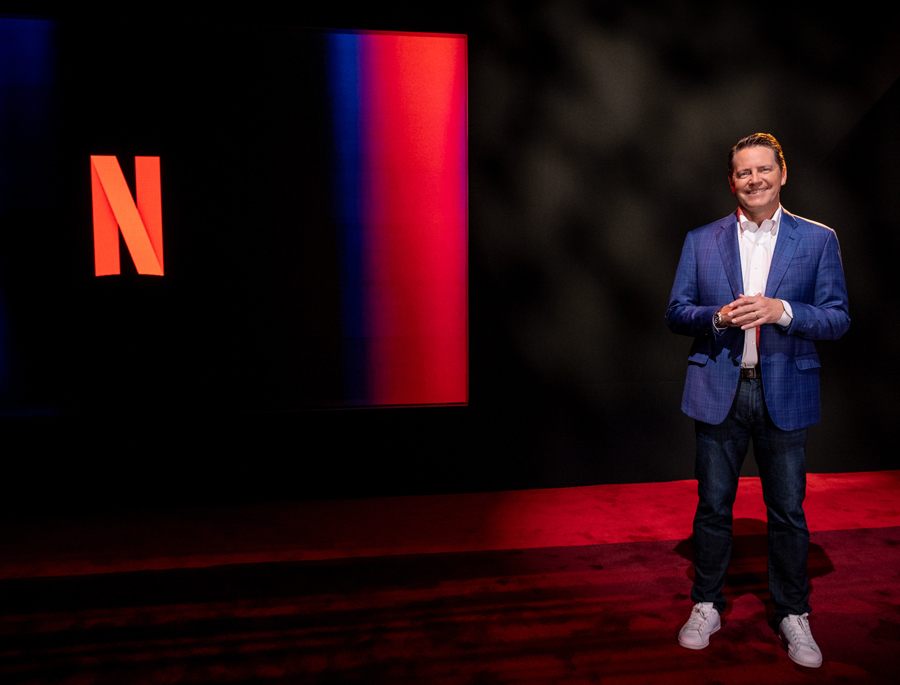Netflix addressed advertiser frustration with its lack of measurement and targeting at its first-ever upfront this week.
At the same time Netflix is trying to get more subscribers to sign up for its ad-supported tier, it hopes to impress advertisers with better measurement and targeting.
On Wednesday, Netflix announced that, starting in Q4, advertisers can use Nielsen’s digital ad ratings (DAR) for measurement.
Netflix chose Nielsen’s DAR for audience measurement and both DoubleVerify and Integral Ad Science for ad verification when it first launched ads in October. But the streamer didn’t expect to be ready for advertisers to actually use those measurement partners for Netflix until 2023.
Netflix also inked a new partnership with outcomes-based measurement provider EDO to add more than just audience reach to its measurement capabilities.
Additionally, the company unveiled sponsorship opportunities for brands to buy pre-roll spots for specific shows and shared plans to run campaigns tied to holidays so buyers can target audiences when they’re most engaged. Many of Netflix’s streaming competitors already do these types of sponsorship deals.
“For years, we tried to keep our business as simple as possible so we could grow as fast as possible,” said Co-CEO Ted Sarandos during the upfront. But things changed once the company built an ads business.
“We [still] have a long way to go to build scale in advertising,” Sarandos said.
Measured and untethered
Compared with other TV programmers, Netflix appears hesitant to use TV measurement and currency alternatives.
Naming Nielsen as its measurement partner of choice hasn’t impressed advertisers so far.
“Nielsen’s DAR is not enough and is not appropriate for digital measurement,” said Omnicom Media Group’s Kelly Metz after the announcement in October.
But Netflix is at least improving its measurement game with these recent developments – even if it’s still avoiding using a non-Nielsen currency.
“Brands need to know that their ads are reaching the right people,” said Peter Naylor, the entertainment giant’s new VP of global ad sales, who came over from Snap in August.
The need to understand campaign results goes beyond counting reach, he said. Which is why Netflix is partnering with EDO to add brand lift, search impact, conversions and unique reach to its measurement slate. Advertisers will also be able to see these results for individual campaigns.
This new partnership is Netflix’s way of putting more numbers behind the higher engagement it claims its ads drive compared to broadcast and its streaming competitors.
According to EDO’s numbers, viewers are four times more likely to take an action after seeing an ad on Netflix versus other streaming services, and 4.5 times more likely than on linear TV.
Netflix doesn’t plan to stop with EDO and Nielsen DAR, which joins the new (and separate) verification measurement dashboards from DoubleVerify and Integral Ad Science on the streamer’s list of measurement that advertisers can use this year.
“We’ll continue to unlock more measurement capabilities in the coming months,” Naylor said.
In addition to measurement, better ad targeting is also on Netflix’s agenda.
Until now, advertisers could only target ads based on genre and country. (Yawn.)
On top of including sponsorship opportunities in its upfront package this year for buyers to choose which titles they want to run pre-roll ads on, Netflix also has plans to add more digital-like targeting to its inventory in the near future.
When viewers pause or stop a show, ads could “follow you,” whether or not the show continues, said Sarandos, making an allusion to retargeting.
“This won’t [necessarily] happen next week, or even next year – but it is an idea,” he said. “We want to apply the same creativity to advertising as we do for programming.”




















